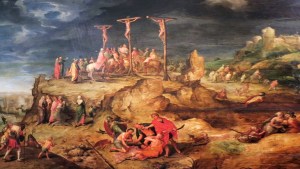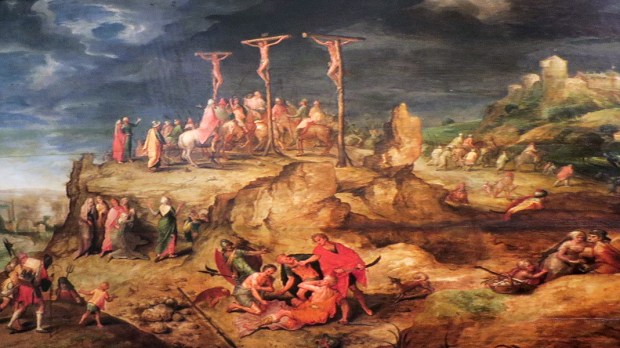In the Gospels, the site where Christ was taken to be crucified is most often referred to a “Golgotha,” a Hebrew word that — Aleteia’s own Philip Kosloski explains — means “the place of a skull.” In English (from the Latin), the same site is known as Calvary, and its location has long been a point of contention between scholars.

Read more:
What does the word “Golgotha” mean?
Today, the Church of the Holy Sepulchre stands at the location that is largely believed to have been the biblical hill of Golgotha, but its location within the current city limits has caused debate as to its authenticity. According the both Jewish and Roman customs of 2,000 years ago, executions were to take place outside the city and this would mean that Golgotha was also located outside of Jerusalem.
In the May/June 2016 issue of Biblical Archaeology Review (BAR), Marcel Serr and Dieter Vieweger explain that this reasoning created a discrepancy, as the Church of the Holy Sepulchre is located within Jerusalem’s current city limits. It became clear that in order to put this debate to bed, the ancient city walls of Jerusalem would need to be discovered and compared to the location of the Holy Sepulchre.
To this end an archaeological effort was started, which led to two probable candidates: The previously mentioned Church of the Holy Sepulchre and the Church of the Redeemer, where another ancient stone structure dubbed the “Second Wall” was discovered during the building’s 1893 construction.
Careful examination of the “Second Wall” under the Church of the Redeemer, however, led experts to determine that it could not have been the city wall from biblical-era Jerusalem. They reached this conclusion based on two factors: that the wall was only 5 feet thick, which is far too thin for city walls, and that it dated to the 4th century A.D..
Beneath the Church of the Holy Sepulchre, on the other hand, archaeologists found evidence of its authenticity in the form of evidence of agricultural activity. This supports what we know of the region from the biblical accounts of the Gospels, that the areas surrounding the site of the Crucifixion were utilized for farmland. Further evidence of quarried stone buried even deeper suggest the site was outside Jerusalem’s walls during the time of Christ’s Passion, since no stone quarry would be located within a city.
Experts were also able to determine, from layers of sediment, that the land on which the Holy Sepulchre was built was once of much higher elevation. This also supports what we know of Roman execution practices, that they would choose an elevated place for the display, to serve as a visible example to the entire city.
Serr and Vieweger conclude that the most likely site of Golgotha is indeed the Church of the Holy Sepulchre, which also suggests the authenticity of the Tomb of Jesus, as it maintains adjacency with the Church, just as it was said to have been adjacent to Golgotha in the Gospels.
These findings not only lend credence to the millions of pilgrims who have visited the Church of the Holy Sepulchre, but also to St. Helen, the mother of Constantine the Great, who is reputedly the one who located the site of the Crucifixion, as well as the True Cross. It was in light of this discovery that Constantine ordered the construction of the Church of the Holy Sepulchre.

